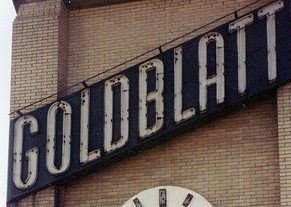
The wisdom teeth extractions -- I had all of mine pulled last week -- didn't go as smoothly as planned. Thank God for Vicodin! One thing I learned: It's damned near impossible to knock me out. The doctor gave me a sleeping pill to put me under. An hour and a half later, I was still reading the book I'd brought along. "Do you want us to top that off with a little gas?" he asked. "Sure!" I said (I'm never one to turn down legal drugs), and so I sat there for the next half hour with the mask over my mouth and nose, looking like a pilot on one of the Apollo missions. Nothing. They probably should have begun shooting at me with a tranquilizer gun or blowing poison darts at my neck, but they finally just gave up and pulled the teeth.

Enough about my teeth. Here are few fun facts about Burbank from The Encyclopedia of Chicago.
Did you know...
One of the earliest roads to run through the area was the diagonal State Road...By 1871, State Road attracted the attention of a Pittsburgh investor who laid out a subdivision along this route that apparently never materialized. Instead, German and Dutch truck farmers settled in the area.
1871 was the year of the Chicago fire, by the way.
Anyway, Burbank's history is apparently full of such false starts. A dude named A.B. Stickney -- name ring a bell? -- made plans for Burbank (before it was Burbank) to become a transfer station for the freight railroad, but the depression of 1893 nixed those plans.
In the 1920s, developers bought up a lot of the land with the hope of capitalizing on the subdivision boom, but "the ongoing drainage problems, poor roads, and inadequate water and sewer systems, as well as the Great Depression, dampened enthusiasm of many would-be buyers."
So, what changed Burbank's luck? The creation of the South Stickney Sanitary District in 1952, back when Burbank was known as South Stickney or Burbank Manor. Population tripled, "reaching an estimated 20,720 in 1960."
To avoid annexation by Chicago, Burbank became incorporated in 1970, taking the name from the already-existing Luther Burbank Elementary School. (Luther Burbank was a famous horticulturist, and, yes, he's responsible for the Russet Burbank potato that we all know and love, but...what's his connection to Chicago's southwest side again? Hmmm... Must investigate this futher.)
Oh yeah, one last tidbit: Burbank's population peaked in 1976 at 29,448.
Class dismissed.






